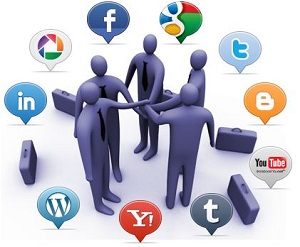How today's workers communicate
Today's workers have a wealth of technology and tools that allow them to communicate more quickly and efficiently. Phone and email are required in many jobs to correspond with bosses, co-workers and clients, and a growing number of roles use more forms of technology to stay in touch. While these tools are changing how business is done, are they the preferred form of communication among workers?
Several workers were interviewed about communication styles in the office, including face-to-face, email, phone and other tools used in businesses today. Find out if you're on the same page as these workers, and learn about communication tools that may help improve your productivity.

Face-to-face communication
Technology has made it easier to reach out to others, though clear communication isn't always guaranteed. The majority of those interviewed said that face-to-face communication is the preferred method of interacting with co-workers and clients, offering clear answers and sidestepping confusion.
"I personally prefer to meet with someone face-to-face whenever possible," says Chris Sinclair, founder and president of The Anthem Group, a Boston-based events agency and consulting group. "It may not always be convenient, but it is so easy to misconstrue tone and intent in an email [or] text. If face-to-face is not possible, phone would be the next best thing, just so ... you know exactly what a person is implying when they say something."
Interacting with one person has its own challenges, but what about a conversation involving multiple people? "When it comes to group meetings, I absolutely prefer face-to-face over a conference call," Sinclair says. "When you get three or more people involved, coordinating that over the phone can become difficult."
Face-to-face communication offers creative advantages as well. Julia Kuziomko, marketing coordinator for Recordsforce Inc., a provider of paper-elimination and process-automation services, says, "I prefer face-to-face communication in the workplace. I believe that seeing who I am speaking to, whether it is to brainstorm new ideas or to collaborate on a project, positively affects my ability to trust that projects will move forward."
Email and other tools
While speaking face-to-face offers clarity, it may not always be the most effective or appropriate way to work. "Face-to-face communication works well in the appropriate function," says Kelli Bhattacharjee, blogger and owner of FreebieFindingMom.com. "If I resorted to this form of communication too frequently, it would increase my inefficiency. For example I am always multitasking, which I would hesitate to do during a face-to-face meeting because that would be considered rude. This is why I prefer email and Skype for the majority of my work activities."

There are also times when face-to-face communication is simply not an option. Gimena Pena Malcampo is the CEO and co-founder of Pier2 Marketing, a marketing firm with offices in San Francisco, Houston, Seattle, Mexico City and Barcelona, Spain. "Our team is located around the world. Also, about 50 percent of our clients are international. As a result, we use several tools to communicate and collaborate, such as:
- Skype: Which we use daily to call each other, send messages and share information or our screen if we need to show a presentation or a document.
- WebEx: We mainly use it to have conference calls with clients. It works quite well for our international clients and is more reliable than Skype.
- Basecamp: We handle most of our projects on Basecamp. This is a great tool to track projects, share information, send reviews, give feedback and make sure everyone is on track.
- Dropbox: It's great for sharing documents, collaboration and even accessing files from wherever we are, even on the go."
Communicating as a team
Technology has the power to bring people together, but workers may still feel disconnected without interacting as a team. Pena Malcampo notes that face-to-face interaction needs to be a priority to keep a company close and functioning as a team. Two important results from face-to-face interaction are bonding and maintaining a company culture.
"Technology can't replace personal and professional relationships," Pena Malcampo says. "When we meet with our team in person, it helps the team bond with each other [and] get to know each other at a different level, making collaboration later on easier. [The] same happens on the customer side; once we establish a bond with our clients, we develop an inherent trust that allows us to work well together and strengthen our business relationship. When we visit our different offices, we make sure our team is providing the level of service we expect to our clients, they are following the company's principles, 'green' practices, etc. These are things that can only be done and checked when we meet in person."
It's clear that technology will only become more predominant in the workplace, but it's essential that workers are able to communicate clearly and effectively, whatever method they choose.
(Picture Source: Internet)
HRVietnam - Collected

